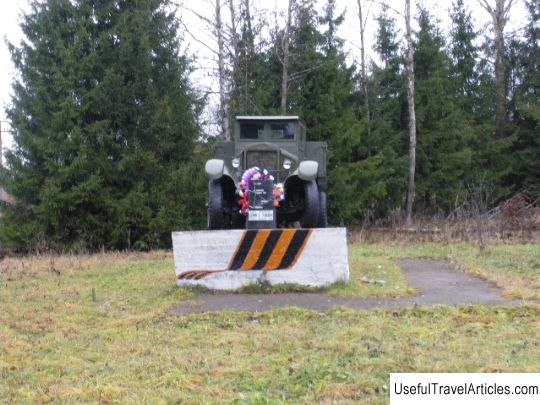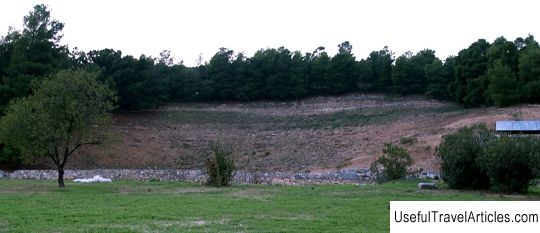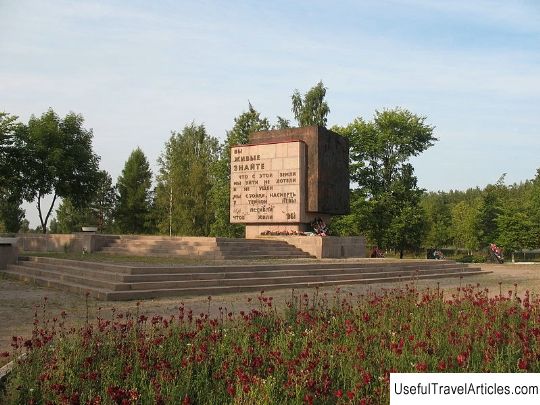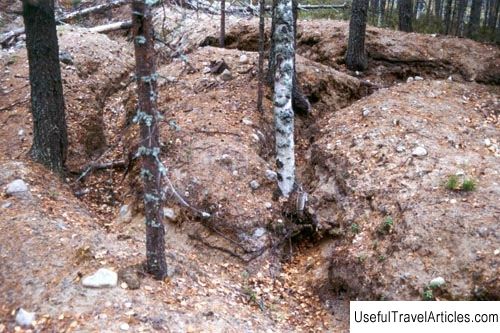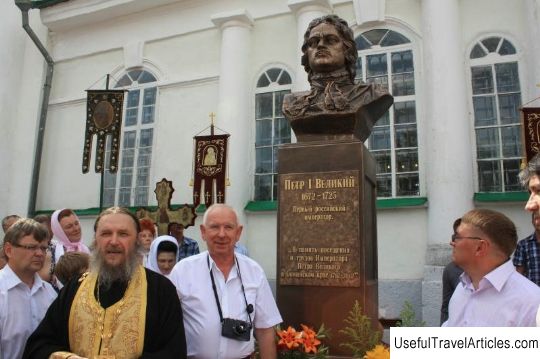Memorial complex and Museum ”Astrach, 1941” description and photo - Russia - Leningrad region: Boksitogorsky district
Rating: 8,2/10 (7804 votes) 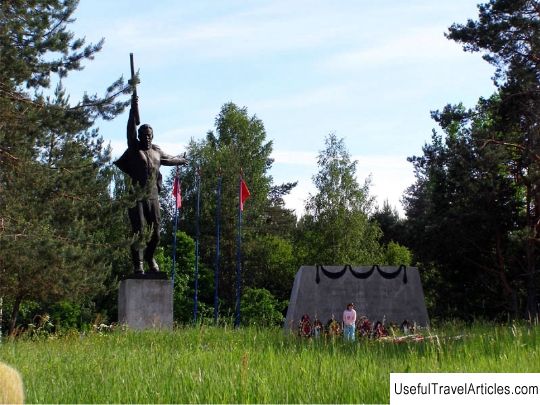
Memorial complex and Museum "Astracha, 1941" description and photo - Russia - Leningrad region: Boksitogorsky district. Detailed information about the attraction. Description, photos and a map showing the nearest significant objects. Photo and descriptionIn the vicinity of the village of Astracha, which is located near the Tikhvin District, there is a memorial dedicated to the soldiers who died during the Great Patriotic War. There are burials of 600 soldiers under the memorial. According to tradition, every year on May 9, a race begins from this place, which runs to the city of Boksitogorsk, after which the blockade participants, as well as war veterans from nearby villages, come here. Discovery of the remains took place in the winter of 1968 during reclamation work. It turned out that the soldiers fought for Tikhvin. It was decided to bury the bodies found on the outskirts of the village, on the territory of which a defense was carried out in the fall of 1941 - in a place where a mass grave was already located. A funeral ceremony was held at this place on Victory Day in 1969; a year later, a Memorial Complex was opened here. According to historical information, the village of Astracha became an insurmountable obstacle in the way of German troops in the fall of 1941. At the end of autumn, the Germans were able to capture Tikhvin, the oldest Russian city, on the territory of which a bloody battle took place, which played a huge role in the life of Leningrad. After the capture of this city, the fascist troops were going to move to Leningrad, which was only 100 km away. The plan was to completely block the road through Ladoga, then the city would find itself in a closed ring. Judging by the calculations of the fascists, it should have fiercely waged a war for Moscow, which is why it would not be able to allocate the required number of soldiers to defend Leningrad. But the plan went wrong when the Soviet command threw all efforts, to interrupt the path of the enemy near Tikhvin. The commander of the troops was appointed General K.A. Meretskov. In November 1941, reinforcements from Moscow arrived in the Astrach region under the leadership of P.K. Koshevoy The 46th brigade was also sent here under the leadership of V.A. Koptsov a - Hero of the Soviet Union. After all forces had been assembled and a plan of action had been envisaged, on November 19, an order was given for an immediate offensive. During the offensive, many soldiers gave their lives for the good of their homeland. Among such people were the secretaries of the committees of the Boksitogorsk peat plant and the bauxite mine Zhukov Ivan and Kostenko V., as well as workers of the alumina plant, including I.P. Smirnov. The soldiers of the Soviet artillery regiment showed their valor in the difficult battle near the village of Astrachi. Mananov Ildar showed incredible courage, who, in a grave condition, continued the offensive, covering with himself the repulsing fascists of our troops. For his exploits, Mananov Ildar received the title of Hero of the Soviet Union. The lieutenant of the artillery regiment V.K. Petrushok behaved fearlessly on the battlefield, who secretly made his way to the rear of the enemy, after which he adjusted the direction of fire at bunkers and enemy manpower. Petrushok remained unnoticed all night and returned to his troops only in the morning, but was mortally wounded. In the winter of December 5, the decisive battle for Tikhvin began. It was the battles near the village of Astracha that completely turned the course of events in the battle for the city. As a result of offensive operations, the fascist troops were thrown far back beyond the Volkhov River, which thwarted Hitler's plans to form a blockade ring, thereby capturing Leningrad, and then moving to Moscow. In 1975, not far from the memorial, the museum of military glory "Astrach, 1941" began its work. The museum is housed in the building of a pre-existing primary school, which was built long before 1917, which was preserved during the war. The school corner became the main component of the museum, where schoolchildren collected all things found since the war. Of great importance were the so-called "red pathfinders" - secondary school students in the city of Boskitogorsk, as well as students of schools in the Tikhvin region. In the early days of its existence, the Astrach, 1941 museum worked only on a voluntary basis, but later time he became one of the branches of the local history museum in the city of Pikalevo,          We also recommend reading Ruzhany Palace description and photos - Belarus: Brest region Topic: Memorial complex and Museum ”Astrach, 1941” description and photo - Russia - Leningrad region: Boksitogorsky district. |
